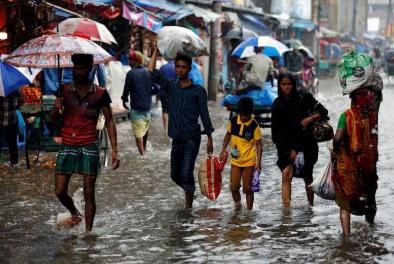Science Source
The long-term variability of Changma in the East Asian summer monsoon system: A review and revisit
- States that Changma, which is a vital part of East Asian summer monsoon (EASM) system, plays a critical role in modulating water and energy cycles in Korea
- States that characteristics of Changma have undergone significant interdecadal changes in association with the mid-1970s global-scale climate shift and the mid-1990s EASM shift
- This paper reviews and revisits the characteristics on the long-term changes of Changma focusing on the underlying mechanisms for the changes
- States that four important features have exhibited changes during last few decades:
- mean and extreme rainfalls during Changma period from June to September have been increased with the amplification of diurnal cycle of rainfall,
- the dry spell between the first and second rainy periods has become shorter,
- the rainfall amount as well as the number of rainy days during August have significantly increased, probably due to the increase in typhoon landfalls, and
- the relationship between the Changma rainfall and Western Pacific Subtropical High on interannual time scale has been enhanced.
- States that the typhoon contribution to the increase in heavy rainfall is attributable to enhanced interaction between typhoons and midlatitude baroclinic environment
- Notes that the change in the relationship between Changma and the tropical sea surface temperature (SST) over the Indian, Pacific, and Atlantic Oceans is a key factor in the long-term changes of Changma and EASM
- Concludes that possible sources for the recent mid-1990s change include 1) the tropical dipole-like SST pattern between the central Pacific and Indo-Pacific region (the global warming hiatus pattern), 2) the recent intensification of tropical SST gradients among the Indian Ocean, the western Pacific, and the eastern Pacific, and 3) the tropical Atlantic SST warming
Related Content
Headline

Nov 16, 2017 | India Climate Dialogue
Extreme rainfall leaves cities floundering
Headline

Nov 16, 2017 | Reuters
Worst monsoon floods in years kill more than 1,200 across South Asia
Headline

Nov 16, 2017 | Hindustan Times
Mumbai floods: Why India’s cities are struggling with extreme rainfall
Science Source
| Nature Communications
A threefold rise in widespread extreme rain events over central India
M. K. Roxy, Subimal Ghosh, Amey Pathak et al


